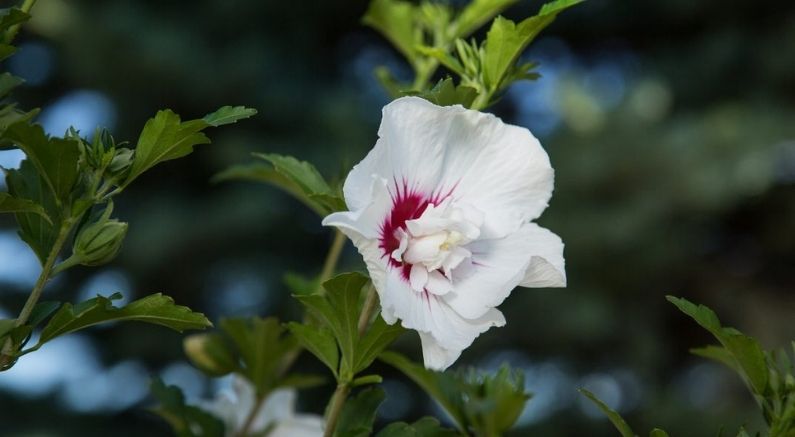Pruning hibiscus is not normally needed for the hardy hibiscus. Actually, these plants are herbaceous perennials, meaning their tops die down to the ground each winter, but new shoots will come roaring back into lush growth when soils warm the following spring. Because the tops die down each year, pruning is generally limited to controlling plant size when it gets too large for its area.
Pruning the dead material back in the fall is recommended. Prune the dead material back to about 8 to 12 inches. Then, apply a thick layer of mulch over the plant roots, 8 to 12 inches, to keep plant roots from freezing.
In the spring, remove the mulch and prune the remaining dead plant material to ground level. The tropical hibiscus can be pruned in the spring. The time to prune depends on where you live and the weather you expect. The main precaution is not to prune so that the tender new growth is emerging during a time when frost is likely. This guideline dictates that most pruning be done between late February and August, depending on local conditions.
If partial or selective pruning is practiced, there is no real drawback to pruning at any time within that period. Complete cutting back of the plant is best done in early spring only.
Take a good look at the plant to be pruned. Because the new growth will start below any cut you make, you want to plan accordingly. Cutting a few inches off the top is usually not a good idea, as the new growth sprouting off the end of the existing branch will not look quite right. Instead, plan to cut most branches back by about 1/3 or even more, always leaving at least 2-3 leaf nodes (bumps on the stems where leaves once grew) on each branch. The new growth that emerges will be strong and will blend in with the rest of the plant. Pruning hibiscus is not a difficult task.
One way to go about pruning hibiscus is to cut back the longest branches first, and leave several shorter or side branches for another time. This will assure that you have blooms on this plant both early in summer and later when the new growth comes in. Repeat this process in the following year.

